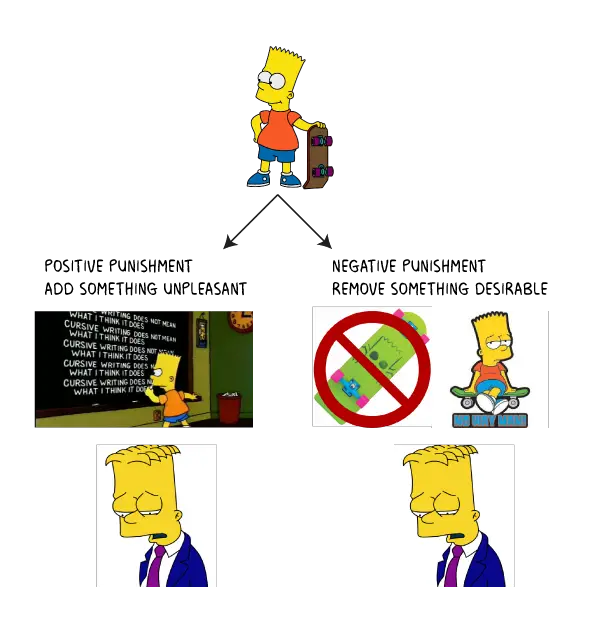Punishment is a fundamental concept of Operant Conditioning, whose major objective is to decrease the rate of certain undesired behavior from occurring again. Punishment can be further classified into two major parts
These two different types of punishment have got both similarities and differences, as the major purpose of both these punishment types is to decrease the rate of certain undesired behavior.
By introducing the concept of punishment to an individual, the individual gets the idea that what he/she is doing, is wrong. Positive and negative punishment, generally speaking, is the concept of adding certain unfavorable consequence or depriving the individual of certain favored item or advantage, in order to decrease the behavior.

Differences Between Positive and Negative Punishment
| Positive Punishment | Negative Punishment |
|---|---|
| It’s the type of operant conditioning that deals with decreasing the rate of undesired behavior by adding a certain negative consequence to the individual after the behavior has been exhibited. | It’s the type of operant conditioning that deals with decreasing the rate of undesired behavior by removing certain favorite or desired item from the individual’s life. |
| Addition of the term “Positive” gives completely contradictory meaning to “Negative” Punishment. | Similarly, the term “Negative” gives opposite meaning to “Positive” Punishment. |
Scenario: Classroom
|
Scenario: Classroom
|
| The effectiveness of the positive depends on the individual and the scenario. It could prove more effective than negative punishments in certain conditions. For example, young children are more likely to be lured by the prospect of receiving candy than spanking. | Depriving an individual of certain favored items could also prove more effective than positive punishment. For example, Taking away certain privileges could prove more effective to a teenager who lacks discipline. |
These examples are of the same scenario; however, the punishment executed to the individual is different. In the set of examples that fall under positive punishment, consequence has been added; on the other hand, a favored item has been taken away.
Similarities Between Positive and Negative Punishment
Despite the differences, positive and negative punishment has plenty of similarities. The major similarity between the two is that both of them are types of the same concept of Operant Conditioning, Punishment.
Also, both of these types work to decrease any undesired behavior from the individual. Another major similarity is the factors that come into play when it comes to effectiveness of these punishments. The most important factors are:
- It should be immediately followed by a response.
- Punishments, both positive and negative, need to be applied consistently, for the undesired behavior to be eradicated completely with the procedure.
Another similarity between Positive and Negative is seen its ineffectiveness. Punishment, as effective as they are, does not always work. Criminals seen every day are the live examples of how punishments might not have worked for them as children. Additionally, convicts who have been sent away often resume their past dealings once they are set free.




